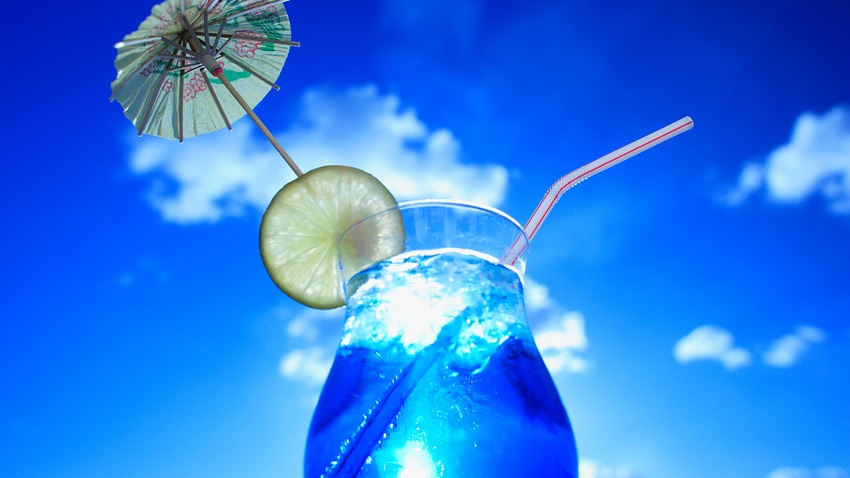Innovation Makes National Drinking Straw Day Worth Celebrating
Once a symbol of global plastic pollution, the drinking straw is becoming an emblem of how single-use products can undergo a metamorphosis through inventive solutions.
February 1, 2024

Editor’s note: To mark National Drinking Straw Day last month, PlasticsToday published “A Brief History of the Drinking Straw.” That prompted Brad Laporte, CEO of WinCup, to share his thoughts.
National Drinking Straw Day, observed recently on January 3, may seem like just another arbitrary celebratory date. However, in the context of the evolving landscape of sustainable materials, it serves as a testament to the transformative power of innovation. The drinking straw, once a symbol of global plastic pollution, is becoming an emblem of how single-use products can undergo a metamorphosis through inventive solutions. This transformation offers hope to a consumer base increasingly clamoring for more sustainable options and to manufacturers grappling with the realization that we’ve entered a new era for single-use products.
Viral video dooms the plastic straw
The notoriety of drinking straws as contributors to ocean pollution reached a pinnacle when a heart-wrenching video featuring a sea turtle with a straw impaled in its nose went viral. This poignant moment thrust global plastic pollution into the public's consciousness, marking a turning point in the collective awareness of the environmental impact of everyday items. Straws, despite constituting less than 0.025% of ocean plastic pollution, became symbolic representatives of a much larger issue, alongside plastic bags, bottles, fishing lines, and various other sources of plastic pollution.
The viral turtle video prompted anti-plastic campaigns, the implementation of plastic bans, and a heightened consumer consciousness regarding daily plastic consumption decisions. Manufacturers, especially those in the foodservice packaging sector, faced a pivotal moment. Companies like mine, WinCup, embarked on a mission to find sustainable alternatives for straws that wouldn't compromise user experience and could be economically scaled. We found the answer in polyhydroxyalkanoate, or PHA, a biopolymer derived from bacterial fermentation of plant-based oils.
PHA, while developed from a renewable source, behaves similarly to petroleum-based plastic in a manufacturing setting. This means existing manufacturing assets designed for traditional plastic products can be repurposed for PHA production, maintaining cost-effectiveness. Importantly, consumers can’t tell a difference in the final product. The real magic of PHA is its biodegradability. Thanks to hungry bacteria that use PHA as a food source, PHA straws can safely return to the earth within a matter of months. In 2020, WinCup received the Innovation in Bioplastics Award for its PHA phade straw, and the development of PHA as an alternative to petroleum-based plastic has grown ever since.
Pernicious effect of greenwashing
However, several challenges have impeded PHA’s ability to reach its full potential in the marketplace. Misleading environmental marketing tactics, or greenwashing, make it difficult for consumers to discern what is and isn’t truly sustainable. This has led to some states enacting packaging laws to keep manufacturers in check. But if the goal is to hold manufacturers accountable for the sustainable attributes of their products and lessen their environmental footprint, then third-party certifications should be required. Bodies such as TUV Austria and the Biodegradable Products Institute (BPI) exist to keep greenwashers in check and assure consumers the products they’re using are indeed sustainable.
The proliferation of plastic bans, while well meaning, have also inadvertently stifled innovation that would more effectively move consumers away from petroleum-based plastic. In the case of plastic straws, most bans state that any form of plastic, including innovative biopolymers like PHA, are not allowed. These policies force businesses to turn to the most economical option — paper. However, aside from consumers’ overwhelming disdain for the soggy paper straw experience, multiple peer-reviewed studies have now confirmed that most paper straws contain the “forever chemical” PFAS. So, in effect, municipalities across the country are forcing contaminated straws into citizens’ mouths. Outdated straw bans need to be updated to account for innovative solutions like PHA or be eliminated altogether.
The successful integration of PHA into the market not only addresses the environmental concerns associated with traditional plastics but also sets a precedent for the potential transformation of various other single-use plastic products. As we raise our glasses on National Drinking Straw Day, let's toast to the strides being made in sustainable innovation, reminding us that even the smallest items can leave a lasting impact on our planet when approached with creativity and commitment to a greener future.
About the Author(s)
You May Also Like




